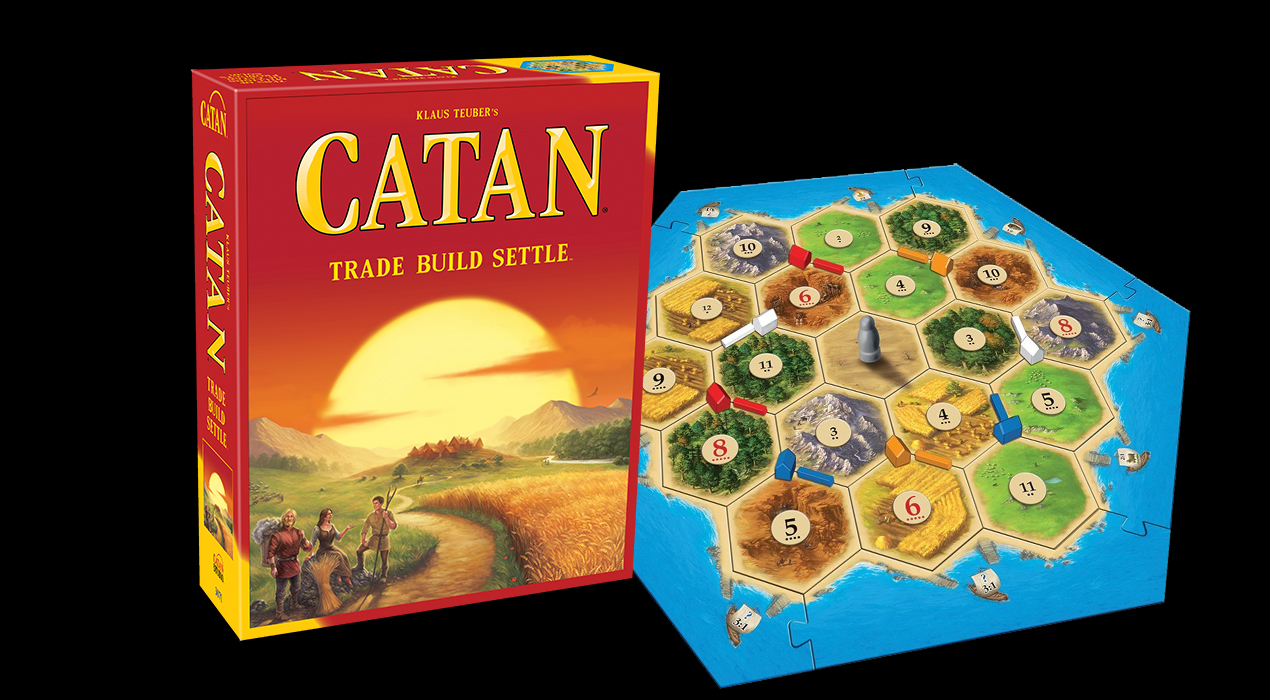A favourite of board game collectors, Catan, or Settlers of Catan as it was originally named, has been available since 1995, and by 2015 had sold more than 22 million copies worldwide. Designed by Klaus Teuber and first published in Germany, the game is designed for up to four players who take their turn to slowly take control of the land on the fictional, titular island.
The steps are simple. Roll. Trade. Build
The board itself is made up of 20 hexagonal pieces that slot together, rounded off with a jigsaw-type border to keep the pieces in place. Each hexagon has a picture representing one of five resources that players will gather and use to build a road, settlement or city. These are represented by little wooden pieces, each player having their own colour. Although the instruction booklet is very wordy, the gameplay itself is basic, so easily explained to others. The steps each player takes on their turn are repeated continuously, so even the most easily distracted players can grasp the concept without fear of losing track.
The steps are simple. Roll. Trade. Build. A player first rolls the two dice, which will equate to a resource. Anyone who has a number on that resource gets to pick a resource card. Now the player can decide whether they want to trade with other players. Getting the resource cards they require, they can now move on to building. The player must use the right amount of resources to build either a road or settlement (worth one point), or a city (worth two points). Placing a road will aid you in progressing across the island. Building a settlement or city next to a resource hexagon will gain you more resources if someone rolls your number. The aim is to be the first player to reach 10 victory points – how they reach that goal is up to them.
Catan can be quite lengthy. As the game progresses and players develop tactics, trading takes up a lot of the running time but subsequent games become quicker as players develop their skills and competitively race to the finish line. Although Catan’s objective is basic, it is a challenge to reach the end goal – and massively rewarding when you do.


Leave a reply
Your email address will not be published.